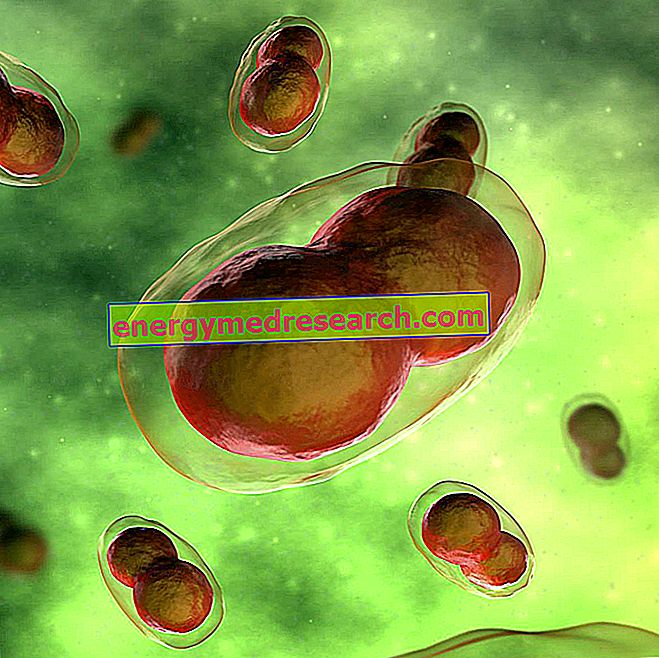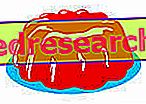Couperose is a French term meaning "reddish".
It is an imperfection that mainly affects the skin of the face. It presents with reddish spots caused by highlighting the superficial capillaries.
Couperose is caused by an abnormal dilation of superficial blood vessels, which intertwine in an evident red-colored lattice.

In medical terms, this condition is best identified as widespread microtelengectasia .
The cause of couperose is attributable to the loss of elasticity, dilation and consequent fragility of the capillaries. The predisposing factors are many and quite different from each other.
It affects mainly older women.
In the case of obvious couperose, although it is a simple blemish, a dermatological examination is advisable. It could be a complication of acne rosacea or an infection / inflammation of hair follicles.
What to do
Couperose cannot be cured, except through specific medical treatments. The interventions that can be adopted are exclusively preventive or palliative (to avoid accentuating the redness of the face).
- To avoid the formation or aggravation of couperose:
- At the first signs of couperose, consult a dermatologist to rule out the presence of acne rosacea
- Limit alcohol
- Ensure the recommended levels of vitamins, whose deficiency could emphasize couperose
- Introduce good levels of foods rich in protective molecules for capillaries (antioxidants)
- In case of endocrine dysfunction, keep the levels of corticosteroid hormones (eg cortisol) under control
- Try to avoid prolonged cortisone-based drug therapies; if possible, replace it with different anti-inflammatories (NSAIDs)
- In the case of gastric and / or hepatic disorders, the resolution of the couperose will consequently occur in the treatment of the disease
- Protect the skin of the face from adverse environmental conditions. It seems that couperose occurs more frequently in subjects exposed to strong temperature stress (hot or cold), solar radiation, chemical elements, etc.
- Use non-aggressive cosmetics, soaps and make-up
- To eliminate them definitively, resort to the most advanced medical remedies
- To avoid the prominence of couperose:
- In case of hypersensitivity, reduce the intake of histamine with food. It does not cause couperose but increases its evidence
- Avoid excess drinks with excitatory power
- Avoid the excesses of certain spices
- Avoid food excesses of any kind
What NOT to do
- To avoid the formation or aggravation of couperose:
- Neglecting acne rosacea
- Abusing alcohol
- Follow a diet low in vitamins and protective antioxidants for capillaries
- Inadequate or inadequate treatment of endocrine dysfunction of corticosteroid hormones
- Follow prolonged cortisone-based therapies
- Neglecting or inadequately treating gastric and / or hepatic disorders
- Subject the skin of the face to adverse environmental conditions
- Use irritating cosmetics, soaps and make-up
- For the prominence of couperose:
- Consume foods rich in histamine (it increases its visibility)
- Exceed with exciting drinks
- To exceed with certain spices
- tuck in
What to eat
- If you do not want to give up the habit of alcoholic beverages, consume no more than 1-3 units of red wine (1 alcoholic unit of wine = 125ml). The latter contains excellent levels of antioxidants such as resveratrol, tannins, etc.
- Foods rich in vitamin C or ascorbic acid: vitamin C deficiency can cause capillary fragility. Foods rich in ascorbic acid are: citrus fruits (lemon, orange, grapefruit, mandarancio, lime, etc.), kiwi, apples, cherries, strawberries, pineapple, lettuce, peppers, parsley, broccoli, cauliflower, tomatoes, etc. To ensure its integrity it is advisable to consume most of these raw foods
- Foods rich in vitamin PP or niacin: the lack of vitamin PP can also cause severe photosensitizing dermatitis and de-epithelialization (pellagra symptom). Foods rich in niacin (nocotinic acid and nicotinamide) are mainly: meat, offal and fishery products; cereals contain a fair amount
- Foods rich in antioxidants, especially polyphenols: many of these have a positive effect on blood vessels. These are simple phenols, flavonoids and tannins, which characterize fruit, vegetables, wine, tea, seeds, etc. To ensure its integrity it is advisable to consume a portion of the raw food
- Foods rich in the amino acid arginine: it is the precursor of nitric oxide and contributes to the maintenance of capillary elasticity. It is contained in most proteins. The most important foods are: meat, fishery products, oilseeds, legumes and eggs
What NOT to Eat
- To avoid the onset or aggravation of couperose:
- Alcoholic beverages
- Food low in vitamins. The lack of these nutrients occurs especially when following a diet without fresh and raw food or a monothematic diet (for example vegan or purely carnivorous)
- To avoid the prominence of couperose:
- Drinks rich in stimulants, especially coffee
- Spicy spices: they are particularly involved: chilli, pepper, red onion, ginger and horseradish
- Histamine-rich foods: in healthy people, histamine present in food is degraded by an enzyme. For intolerant people, however, this is not sufficient and histamine is absorbed. We do not recommend: tomatoes, sauerkraut, spinach, preserves, ketchup, soy sauce, canned fish (preserved, marinated, salted or dried as sardines, tuna, mackerel, anchovies, herring), smoked fish (herring, salmon, etc.) crustaceans, seafood, sausages, salami, dried meat, smoked ham, mortadella, fermented or seasoned cheeses, spirits, wine, beer, wine vinegar, yeast. The histamine increases significantly with the poor preservation of the foodstuffs
- Meals too plentiful: it is advisable to respect the traditional distribution to avoid excess, ie: breakfast 15% of the total daily energy, morning and afternoon snack 5% each, lunch 40% and dinner 35%
Natural Cures and Remedies
Although cosmetics cannot have a direct effect on blood circulation, some herbal products are able to reduce the worsening of the disorder.
These are capillary plants, which stimulate blood circulation and reduce local inflammation.
- Chamomile: thanks to bisabolol and azulene it has soothing and anti-reddening properties
- Licorice: thanks to glycyrrhetinic acid
- Calendula
- Mauve
- Centella asiatica
- Rusco
- Blueberry
- Horse chestnut
Pharmacological care
- Anti-inflammatory and disinfectant ointments
- Retinoid-based ointments, in the case of rosacea:
- Isotretinoin: for example Roaccutan, Aisoskin, Isoriac, Isotrex
- Antibiotic ointments, in the case of rosacea:
- Metronidazole: for example Rozex cream / skin emulsion, Zidoval cream / gel
- Tetracycline: eg Tetrac C, Pensulvit
- Erythromycin: for example Erythromycin IDI gel / cream, Eryacne gel, Zineryt
- Sulfacetamide sodium and sulfur: for example Sulfac S FN
- Azelaic acid: for example Skinoren, Finacea
- Corticosteroids, in the case of rosacea:
- Loteprednolo: for example Loteprednololo, Lotemax 0.5%
Prevention
- Regular lifestyle
- Avoid abuse of coffee and alcohol
- Limit dermatological stress to the face (UV rays, intense cold, intense heat, exhalation or contact with chemicals, etc.)
- Exclude irritating cosmetic products, soaps and make-up
- Treat any underlying diseases of microtelengectasia
Medical Treatments
- Laser treatment: allows to selectively eliminate cutaneous vascular lesions by vaporizing the red blood cells and causing the irradiated vessels to collapse, leaving the overlying skin intact



